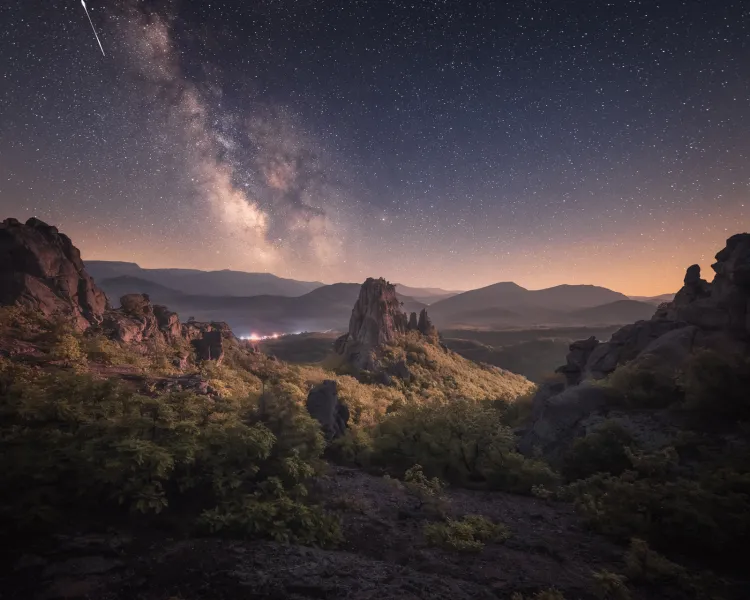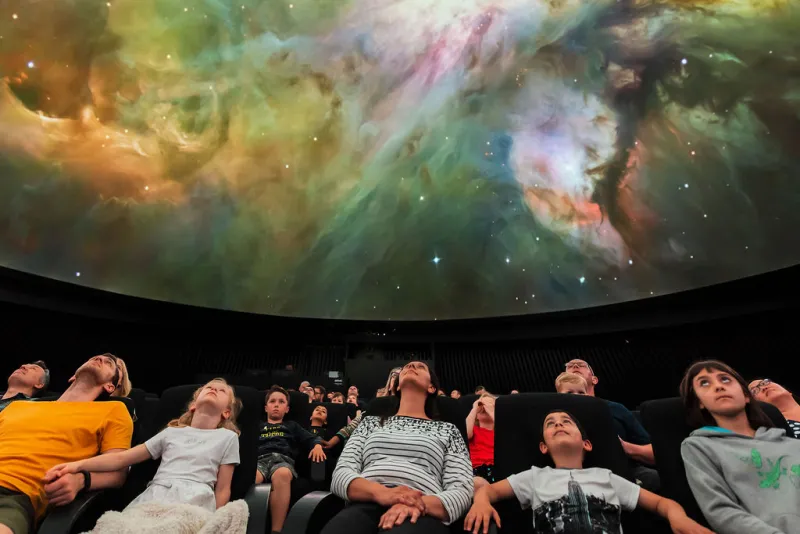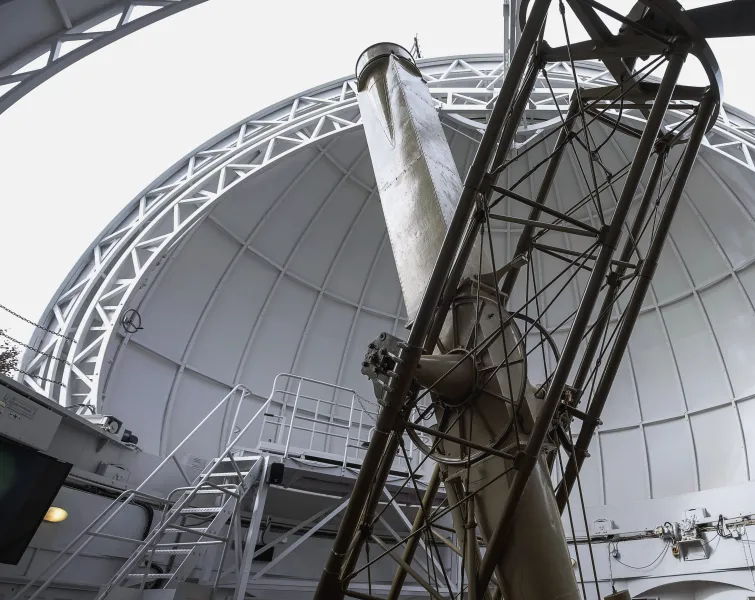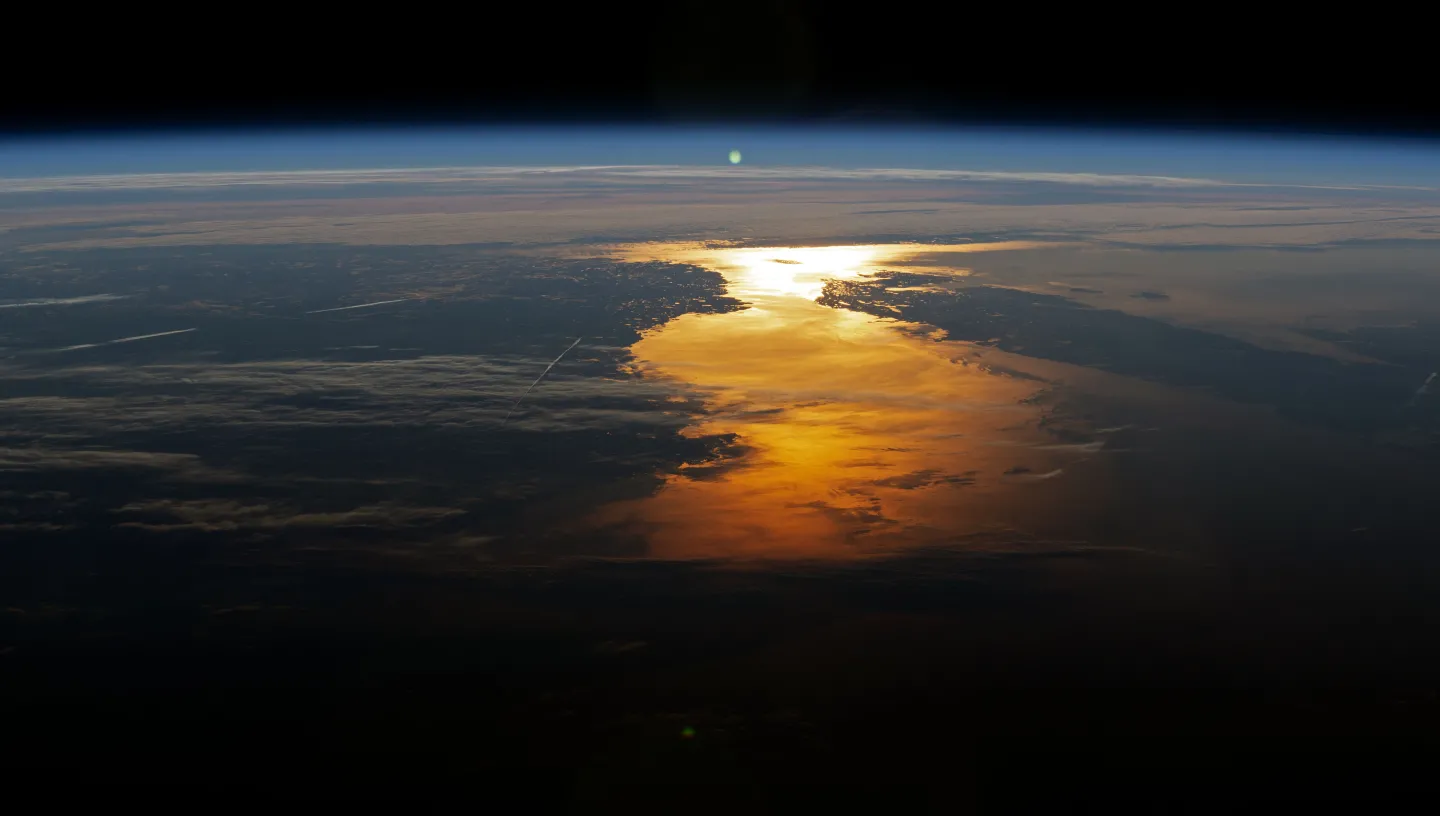
All good things must come to an end. In our lifetimes, we think about things like the end of a holiday or saying goodbye to school friends, but these events are miniscule in the timescale of the Universe.
Astronomers from Royal Observatory Greenwich consider what will happen in billions and trillions of years’ time, and what the end of everything might look like...
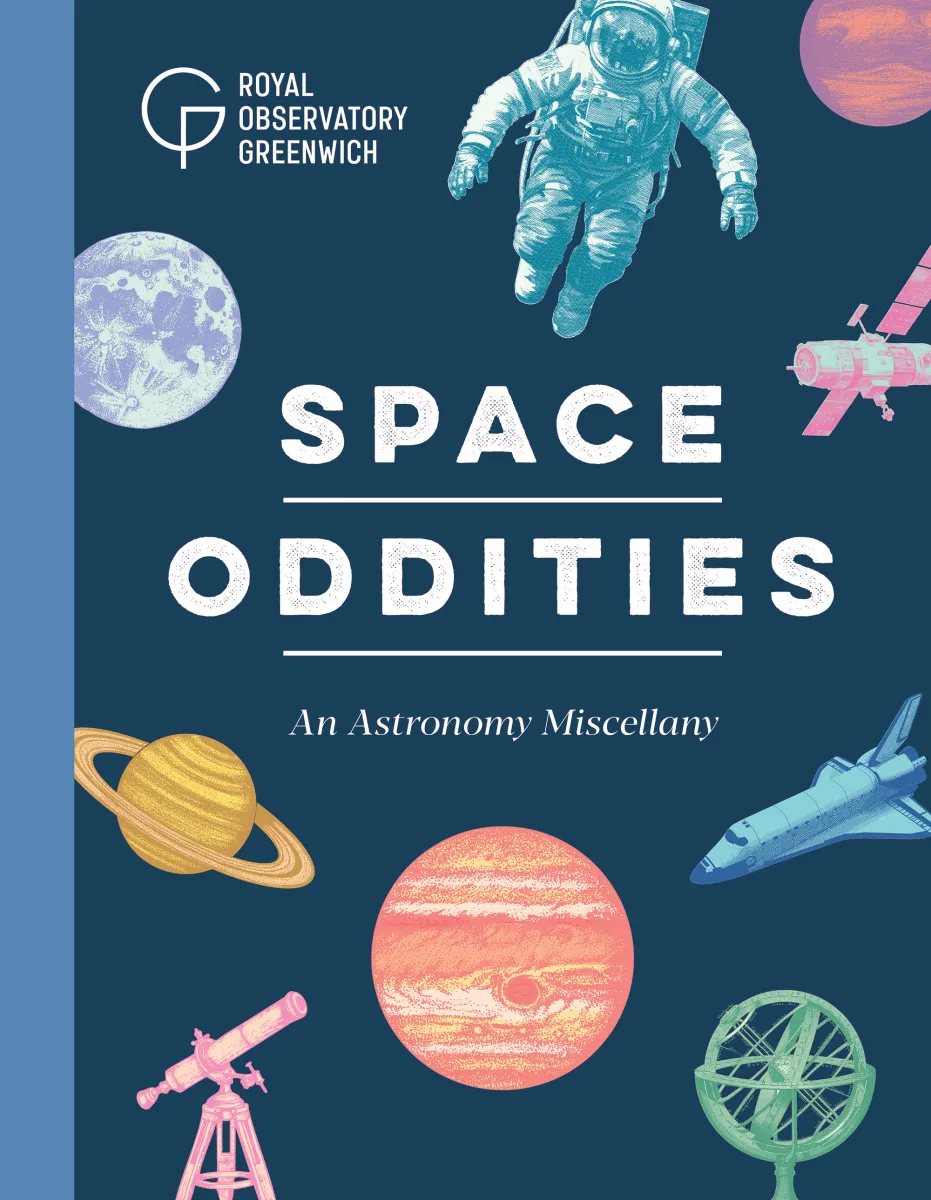
This article is adapted from Space Oddities: An Astronomy Miscellany, a new book from Royal Observatory Greenwich. Let expert astronomers be your guides to the mysteries and the awe-inspiring science of the cosmos. This entertaining miscellany is packed with incredible discoveries, intriguing theories, and facts that are out of this world.
The end of Earth
Our Sun is a huge ball of gas, and our source of heat and light. It is one reason why Earth is a habitable place for us, but it will also be the reason for the unfortunate fate of our planet.
The Sun gives off energy produced by the nuclear fusion reactions in its core, where hydrogen is converted into helium. Currently, our Sun is around halfway through its hydrogen supply. Eventually, though, the hydrogen will run out and when it does the Sun’s core will begin to collapse inwards. Its outer layers will then expand, forming a red giant star.
It is unknown how much the Sun will expand, but current estimates suggest that it will engulf Mercury, Venus and maybe even Earth. ‘Maybe’ is good, right? Wrong! Even if it doesn’t reach Earth, the extreme heat from the then-enormous Sun will be enough to evaporate our planet’s oceans, increase the surface temperature to hundreds of degrees and end all life as we know it.
Time until the end of the Earth: around 5 billion years.
The end of the Solar System
This is only the beginning of the end of our Sun’s life.
After its red giant phase, the star’s outer layers will continue to expand into space, so much so that they will create a planetary nebula (nothing to do with planets!). The outer layers will leave behind a white dwarf, the old star’s core.
Through this process, the Sun will lose about half its mass, causing the gas giant planets (Jupiter, Saturn, Uranus and Neptune) to migrate outwards into wider orbits. They will become less stable as they move further from the source of gravity keeping them in place, making it easier for another star to scoop them up.
Although space is big, over large timescales gravitational interactions with other star systems passing by can cause dynamic instabilities and potentially even eject planets from their systems entirely. These ‘rogue’ planets may journey for eons relatively undisturbed, but they could be captured by another star system, entering into orbit around a new star. The number of variables involved make this kind of change very difficult to predict even roughly, but stellar encounters may eventually leave the white dwarf remnant of our Sun all alone.
Time until the end of the Solar System: Around 8 billion years.
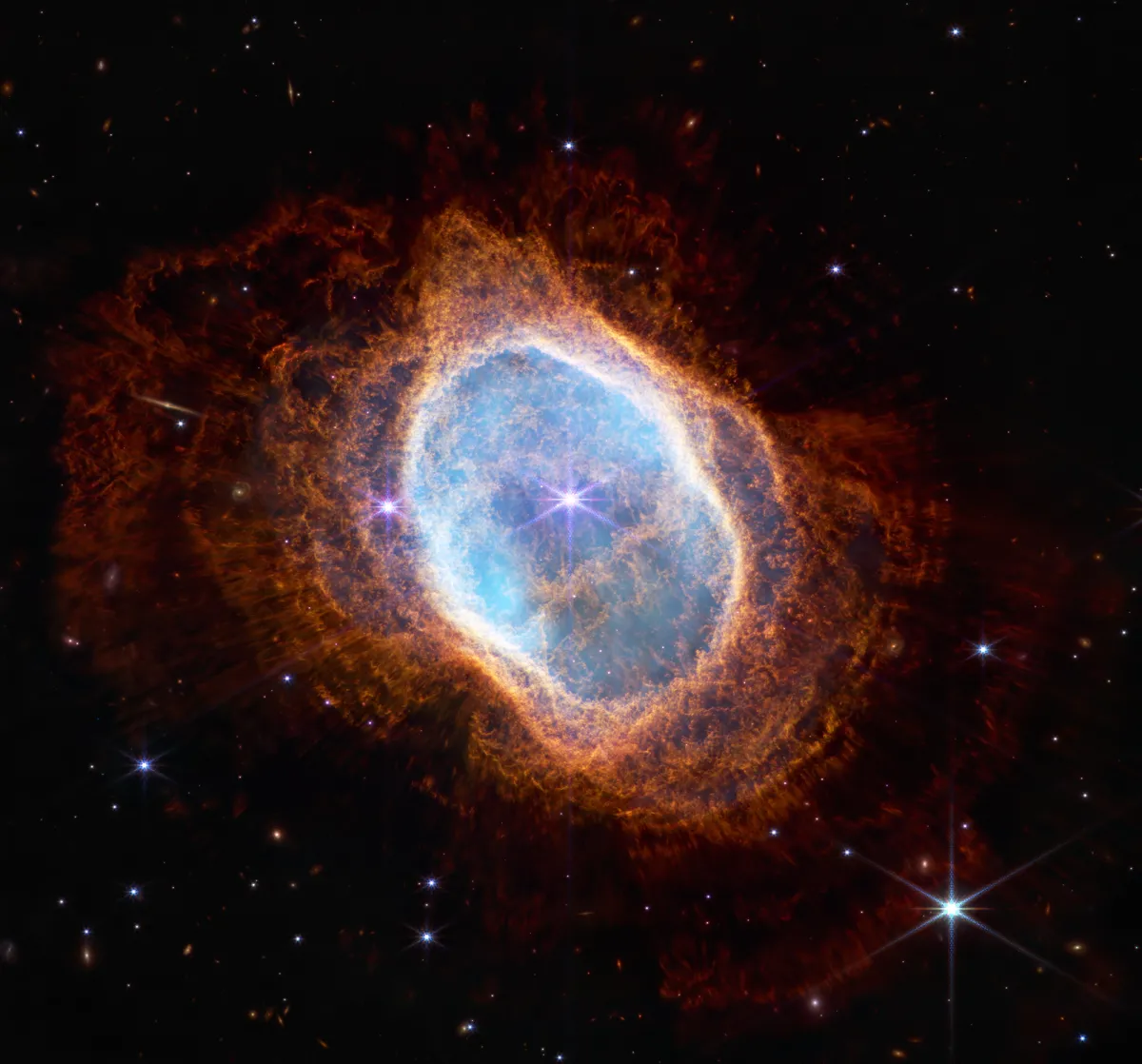
What's a planetary nebula?
Through early telescopes, astronomers saw fuzzy roundish shapes and promptly called them planetary nebulae. This has annoyed other astronomers ever since.
In fact, the shapes are expanding layers of dust and gas pushed outwards by mid-mass stars during their red giant phase. A gentle end, as far as stars are concerned – they are essentially enormous explosions on any sort of human scale, destroying any planetary system that might exist around the star. From afar they look pretty, but they don’t even look like planets!
Image: the Southern Ring Nebula, captured by the James Webb Space Telescope and released in July 2022
The end of the Milky Way
We know that several billion years from now the Milky Way will eventually merge with our closest large spiral galaxy, Andromeda, but it might not be the only merger our Galaxy goes through.
Due to gravity, the majority of galaxies travel in groups. The Milky Way is part of the Local Group, comprising approximately 40 galaxies travelling through the Universe. It is likely that in tens of billions of years, these galaxies will all merge to form one big elliptical galaxy, leaving no evidence of their separate pasts.
Time until the end of the Milky Way: around 100 billion years.
The end of cosmology
The Universe itself is expanding. We observe galaxies to be moving away from us and the more distant they get, the faster they move. At extremely large distances, galaxies may recede faster than the speed of light.
If this continues, the Universe will be expanding so quickly that the light from distant galaxies will be unable to reach us anymore and they will no longer be visible in the observable Universe. Eventually, all that remains will be black holes, neutron stars and some black dwarfs (the fate of stars like our Sun).
Matter is generally stable, but over very long periods it is believed even fundamental atomic particles – the most basic building blocks of matter – may break down, leaving only black holes.
Black holes have a lot of mass, so they will remain for a long time. Although uncertain, British theoretical physicist Stephen Hawking (1942–2018) predicted that even black holes will slowly give out radiation, losing mass until they eventually ‘evaporate’, indicating the beginning of the end.
Time until the end of cosmology: around 150 billion to 10,000,000,000,000,000,000,000,000,000,000,000,000,000,000,000,000,000,
000,000,000,000,000,000,000,000,000,000,000,000,000,000,000,000 years.
Never miss a shooting star
Sign up to our space newsletter and get monthly guides to the night sky, plus special news and updates from the Royal Observatory Greenwich
The end of the Universe?
With the last black hole gone, we are at the end of the Universe’s timeline... maybe.
We don’t really know what the Universe truly looks or is like, so its end could manifest in many ways.
If the Universe continues to expand, energy will be spread out so much that eventually all areas within it will remain at the same temperature. We call this the Big Freeze, when interactions between particles will cease and the Universe will remain at a frozen standstill forever.
But if you don’t fancy the idea of a cold, dark, barren Universe, then don’t worry! There are still more morbid possibilities for how the Universe will end.
As we know, the Universe is accelerating in its expansion. If it carries on expanding at this ever-increasing rate, it might expand so fast that gravity can’t hold anything together anymore. The Big Rip will occur and everything from galaxies to atoms will be ripped apart. All that will be left are single particles travelling through a seemingly empty, timeless space.
There might still be hope, as some scientists say that the Universe won’t expand forever. The Big Bounce theory suggests that, in the future, the amount of matter in the Universe will be so great that gravity will cause the expansion to slow down and stop. Then, it will reverse, causing the Universe to contract until it combines into a tiny point called a singularity before expanding out again, triggering another Big Bang and resulting in the birth of a new Universe. This process could happen again and again, our Universe and future universes stuck in a never-ending cycle of contraction and expansion.
It is worth pointing out that the timescales here leave plenty of time for fun, including studying more astronomy!
Given everything people have learned since our earliest days (hardly the blink of an eye as far as the Universe is concerned), it would be very surprising if we didn't have a huge amount more to unearth. Perhaps the most exciting knowledge is still out there waiting to be discovered and will cast our whole understanding of the cosmos in a brand-new light. Maybe you'll be the one to transform what we think!
Time until the end of the Universe: around 1,000,000,000,000,000,000,000,000,000,000,000,000,000,000,000,000,000,
000,000,000,000,000,000,000,000,000,000,000,000,000,000,000,000,000,000,
000,000,000,000,000,000,000,000,000,000,000,000,000,000,000,
000,000,000,000,000,000,000,000,000,000,000,000,000,000,000,000,000 years... maybe.
Main image: photograph of a sunrise taken by crew on board the International Space Station (courtesy of the Earth Science and Remote Sensing Unit, NASA Johnson Space Center)

